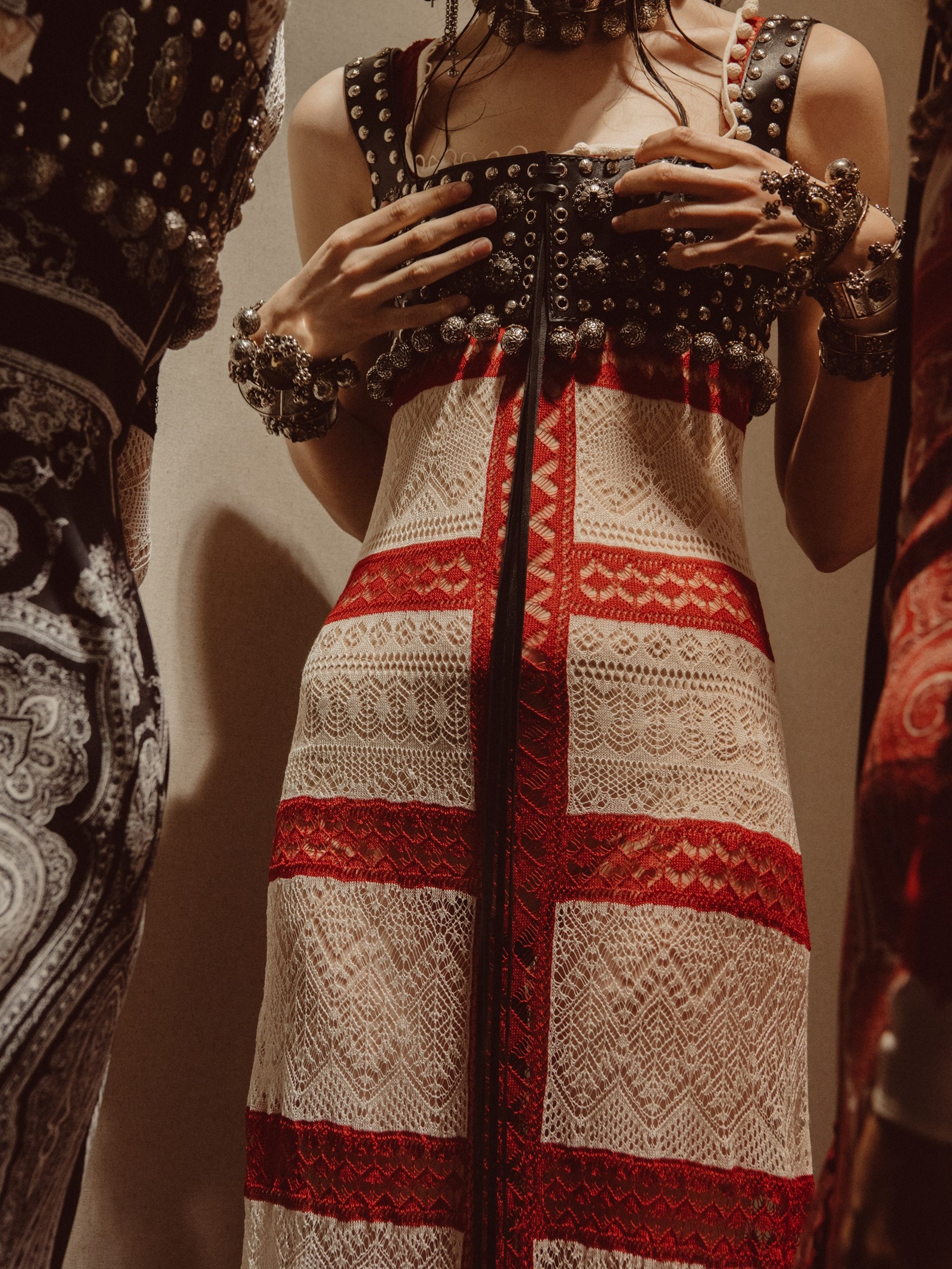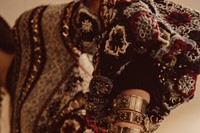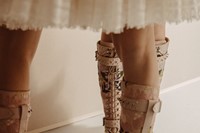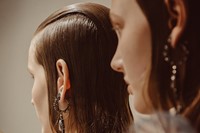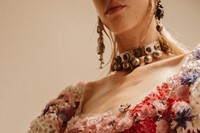“It was all based on the Taatit rug and the fact that the two halves of the family’s, the groom’s and the bride’s rugs, were joined together when they married,” says Sarah Burton, speaking from the spanking new Alexander McQueen Paris studio to which she has re-located in the run-up to the showing of her magnificent Spring/Summer 2017 collection. Following a visit to the Shetland Islands, where the current McQueen print advertising campaign was photographed, Burton and her team were so inspired that she chose to base her new collection on this remote and lovely place and, in particular, on the aforementioned custom of rug weaving which has been passed down between generations of women through the centuries. Richly coloured designs, handmade at home, are sewn together when two families are joined in wedlock and “It’s beautiful in its imperfection,” Burton continues. “Obviously, it’s not symmetrical. It’s intimate, personal, touched by the human hand.”
With this clearly in mind, the island-shaped runway located in the orangery in Paris’ Luxembourg Gardens for the show itself was covered in a patchwork of rugs depicting personal memories of this journey and the Shetland Islands’ magical coastal landscape: sea walls, deserted croft houses, island flowers and of course the ocean all featured, just as they did in the clothes.
“It’s beautiful in its imperfection... Intimate, personal, touched by the human hand” – Sarah Burton
It’s an unashamedly romantic reference and one very suited to Sarah Burton’s handwriting as she becomes increasingly confident as the creative head of the house of Alexander McQueen. A celebration of Scottish craft, it also harks back to the house’s founder who was famously passionate about his family history and that country. “I loved the idea of community and craft,” Burton explains, “of bringing the different elements of the studio together, the leather team, the knitwear team, the jewellery team, the embroidery team…” The result was perhaps the designer’s most accomplished work to date, an extraordinary display of ever more intricate designs that fused the masculine Savile Row-inspired tailoring that has always been at the heart of this name, with the most delicate, quintessentially feminine hand-worked pieces, finished to a level more familiar to the haute couture atelier than to ready-to-wear, but which filters down to inform the more obviously commercial collection that it will sit alongside in store.
Burton’s mindset couldn’t be more different from the consumer-facing, see now, buy now incentive that is currently making its mark elsewhere. These pieces are made with love, to be worn and cherished for years, and passed down like precious heirlooms. Given the proliferation of product that floods today’s market, that was an uplifting thing to see.
A Landscape of Lace
While Shetland Lace has been made for centuries, it was Queen Victoria who made it famous. Again, Victoriana has long been central to the McQueen vocabulary, so this was only apposite. Folklore has it that the monarch in question was sent a Shetland Lace shawl when she was a young woman – it was so finely made that it allegedly passed through a wedding ring, and she loved it. She continued to wear Shetland Lace throughout her reign, and was responsible for making it fashionable. At McQueen, the Shetland-inspired lace embroideries featured native flora and fauna – wild heather, clover, poppies, roses, sea birds, cobwebs, cockle shells and underwater creatures – all re-imagined by Burton and her team to exquisite effect. Slender dresses were harnessed to the body with finely wrought soft leather, finished with rows of jingling bells in antique silver and were grounded when worn with hobnail ankle boots with chunky soles and gleaming metal toecaps, more than sturdy enough for even the wildest landscape.
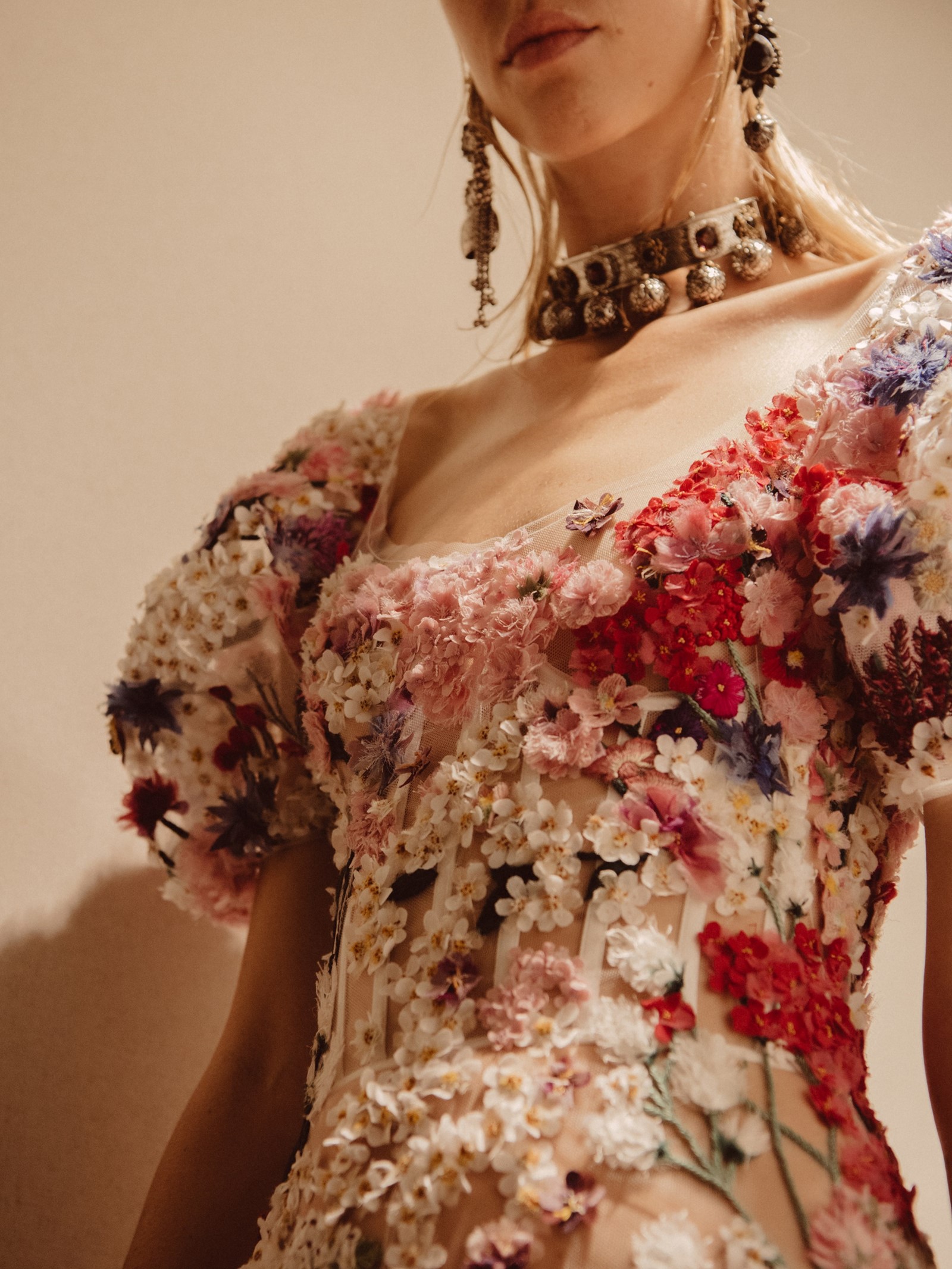
Impeccably Tailored Modernity
True to the origins of the house of Alexander McQueen – Lee Alexander McQueen himself was famously an apprentice at both Gieves & Hawkes and Anderson & Sheppard – the collection’s more feminine side was played off against proudly masculine tailoring. Celtic check, strong-shouldered jackets, kilts and kickback trousers in black and grey were slashed and inset with more lace and embroidered with jet beading. More was crafted in the Celtic Paisley once sported by the male Scottish nobility. Though impeccably cut jackets boasted a complex puzzle of panels and seams, there was an ease and modernity to the silhouette that was good to see: sharp but never tricksy.
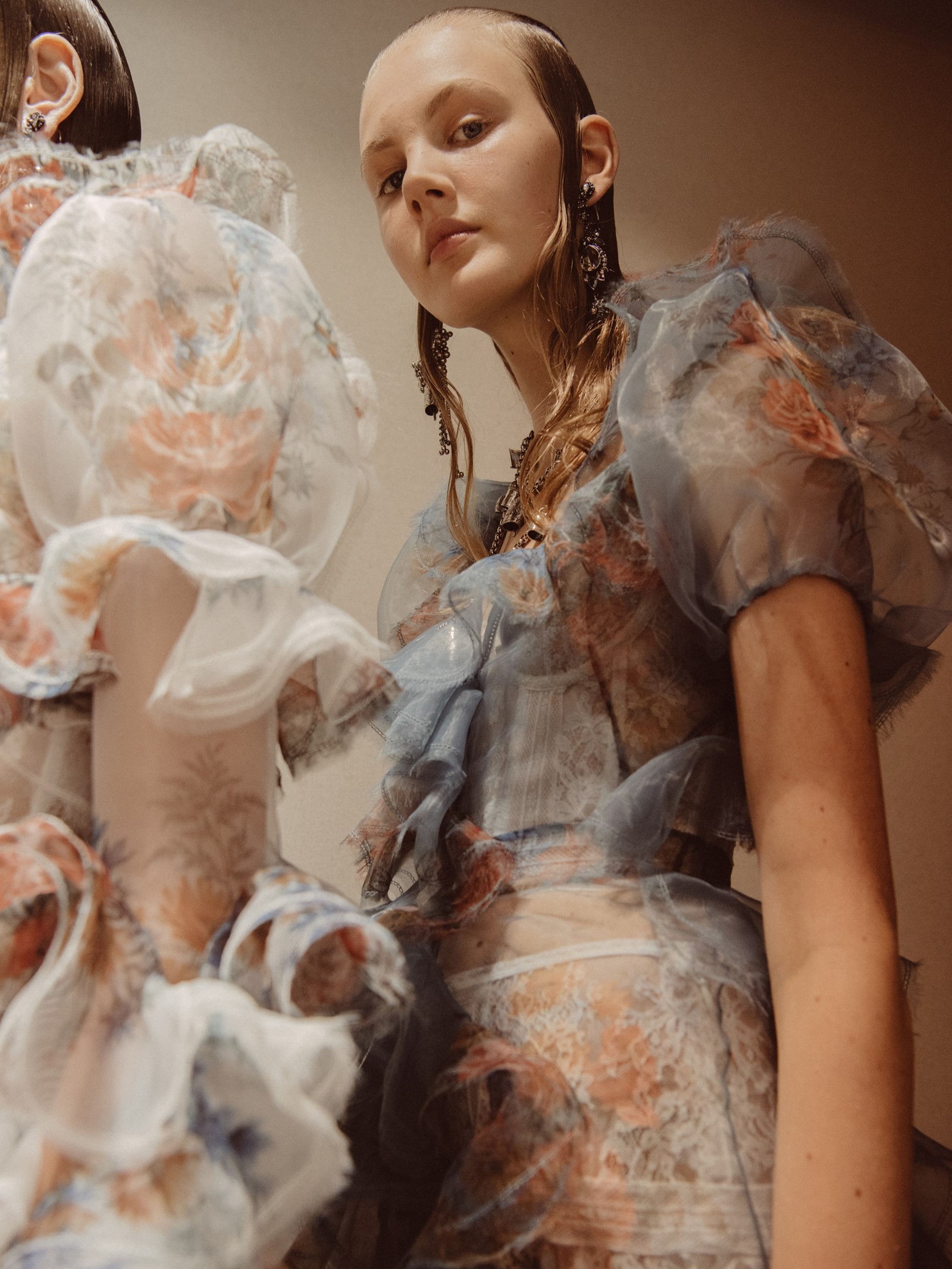
Life on the Street
Also central to the McQueen handwriting was leather and denim, but not just any old leather or denim will do. Burton has a collection of antique fabrics and the richly hued florals – printed, embroidered or hand-painted – that featured across these had their origins here. Cutaway frock coats, corsetry, and ruffled leather dresses had their roots in humble workwear – jeans and perfecto jackets especially – but were also in fact haute, such was the work that went into their making. That process, too, was a nod to the Shetland Islands’ spirit of community and kinship, Burton said.

Elaborate Fairisle knits and Featherweight Cotton Voile
As if Shetland-inspired lace wasn’t complex enough, wool sourced in the Shetland Islands was hand-knitted, patched and further embellished with rainbow-coloured, crochet-knit circles. An equally elaborate process went into the creation of chunky sweater dresses. If these were the perfect thing for a crisp spring jaunt, they were juxtaposed with black and white cotton voile dresses printed with bright blue thistle buds and garlands of wild flowers. As light and voluminous as clouds with sleeves that puffed at the shoulder and were then fitted closely to arms, they brought crofters’ daughters in the glittering sunshine to mind.

And Finally…
The collection, as always, became increasingly involved, culminating in a sequence of skeletal tulle dresses etched with sea creatures in black beaded embroidery. The last two ‘shipwreck’ dresses were just as precious as any lost treasure it is possible to imagine, densely embroidered as they were with cascading fringes of jet and silver sequins and with trailing hemlines so fragile they appeared to foam like the wake of the sea: Burton’s heroine, an otherworldly mermaid, appeared almost to be engulfed by the ocean waves.
